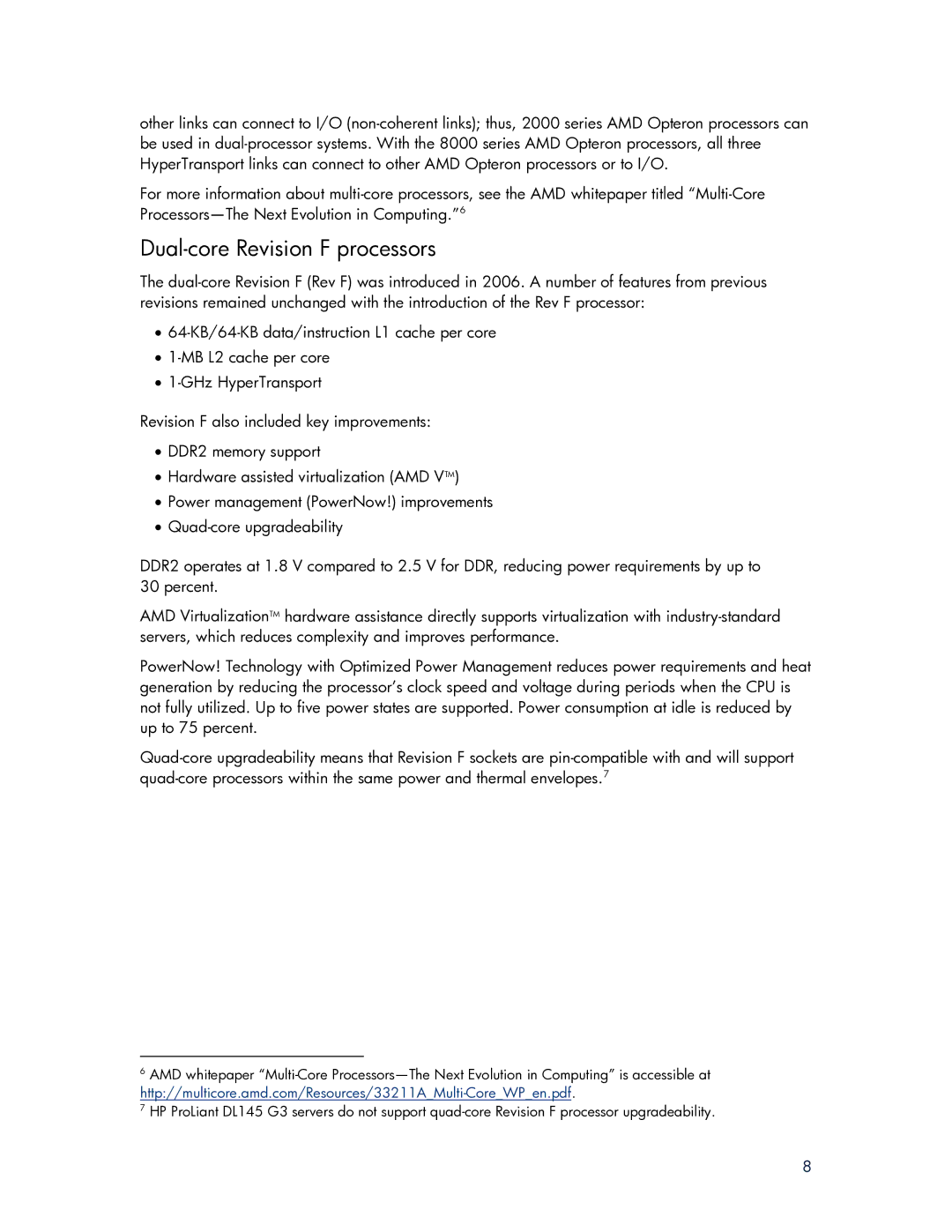other links can connect to I/O (non-coherent links); thus, 2000 series AMD Opteron processors can be used in dual-processor systems. With the 8000 series AMD Opteron processors, all three HyperTransport links can connect to other AMD Opteron processors or to I/O.
For more information about multi-core processors, see the AMD whitepaper titled “Multi-Core Processors—The Next Evolution in Computing.”6
Dual-core Revision F processors
The dual-core Revision F (Rev F) was introduced in 2006. A number of features from previous revisions remained unchanged with the introduction of the Rev F processor:
•64-KB/64-KB data/instruction L1 cache per core
•1-MB L2 cache per core
•1-GHz HyperTransport
Revision F also included key improvements:
•DDR2 memory support
•Hardware assisted virtualization (AMD VTM)
•Power management (PowerNow!) improvements
•Quad-core upgradeability
DDR2 operates at 1.8 V compared to 2.5 V for DDR, reducing power requirements by up to 30 percent.
AMD VirtualizationTM hardware assistance directly supports virtualization with industry-standard servers, which reduces complexity and improves performance.
PowerNow! Technology with Optimized Power Management reduces power requirements and heat generation by reducing the processor’s clock speed and voltage during periods when the CPU is not fully utilized. Up to five power states are supported. Power consumption at idle is reduced by up to 75 percent.
Quad-core upgradeability means that Revision F sockets are pin-compatible with and will support quad-core processors within the same power and thermal envelopes.7
6AMD whitepaper “Multi-Core Processors—The Next Evolution in Computing” is accessible at http://multicore.amd.com/Resources/33211A_Multi-Core_WP_en.pdf.
7HP ProLiant DL145 G3 servers do not support quad-core Revision F processor upgradeability.
8
